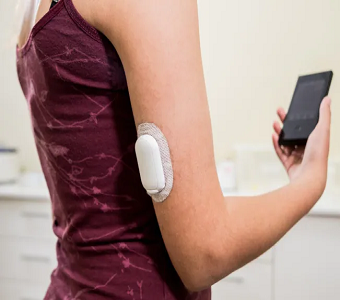Last week, Gossamer (GOSS) hosted a KOL call to discuss their Phase 2 results, OLE data and upcoming Phase 3 design. Below are notes from the call.
Phase 2 & OLE results
- 3/11 patients reached a PVR<200 dynes at week 72 in the OLE continued seralutinib group. This is a level that is considered “normalized”. For PAH patients, reaching normalized levels of pulmonary vascular resistance is a rare event. 3 vasodilator therapy + an inhaled tyrosine kinase inhibitor (seralutinib) provide hope that PAH, a previously deadly disease, can now potentially be chronically managed.
- Patients in the placebo-cross over had PVR reduction of 13%. This was approximately in line with the Phase 2 data that tracked out to 24 weeks.
- More OLE data, which includes next cohort of most unwell cohort, will be towards end of year at a scientific conference. This is likely the next market moving catalyst for GOSS.
Seralutinib Safety Profile
- Oral selexipag (Uptravi), oral Treprostinil (Tyvaso), oral ralinepag, inhaled Treprostinil, under the very best of circumstances, come with a side effect profile that is clearly more burdensome than what we’ve seen with seralutinib so far. These marketed drugs are all $1B generators.
- The seralutinib data, from Phase 2 to long term safety, show a wonderful degree of drug tolerance and side effect profile in comparison with the prostacyclin drugs above that are right now the mainstay of therapy for sicker patients.
- Seralutinib’s administration as a dry powder inhaler (DPI) is the right product profile that is convenient and safe for patients.
Potential as Combination Therapy
- The current drugs on market, their main purpose is to allow the heart to function better in the environment of high pulmonary vascular resistance. So, while those drugs are stabilizing the patient, seralutinib can be seen as a drug that has effect on the underlying disease; remodeling the pulmonary vasculars. Seems logical to add.
- OLE data showed that almost all of the patients who have short-term benefit at 6 months continue to improve with long-term treatment. These effects are impressive in this less sick and heavily treated population, many taking up to 3 background therapies — including prostacyclins.
- Physicians will combine drugs because neither sotatercept nor seralutinib is going to be a cure for PAH patients. There will be some patients with a very beneficial response from both or other moderate responses, and there will be some patients with no responses. Having complementary drugs at hand, that can be combined, is going to be of utmost importance for patients.
Potential as 3rd or 4th-Line Therapy
- Current PAH patients who tend to be stable are on dual or triple background therapies. However, even those on dual or triple combination therapies need additional complementary therapies because only about 50-55% see benefit. This leaves half the market for seralutinib to be added as combo.

- The normal walk test is 650-700 meters. The field as a whole is very far from this as a trial is capped at 450 meters. As early third or early fourth therapy, seralutinib is exciting and the market is hungry for a treatment with its characteristics, given safety profile, long term efficacy and potential reverse remodeling.
Merck/Acceleron Sotatercept Shortcomings
- Although the efficacy of sotatercept is well taken, long-term safety needs to be covered and monitored very diligently.
- The PAH community of researchers and physicians are excited about the efficacy results of sotatercept. However, not every patient is a responder. In Phase 3, sotatercept showed that 40% of patients met multicomponent improvement in endpoints. The non-responders will need to rely on alternate therapies and combinations.
- There is an emerging safety profile. The side effect profile was almost negligible in Phase 2, to the Phase III study with the occurrence of telangiectasia and bleeding events to now in long-term data, which show that there is a trend towards an increased occurrence of new vessel malformations and also a higher incidence of bleeding events.
- It is also a drug that is administered every 4 weeks subcutaneously, which demands a sophisticated supply mechanism, special pharmacies, traveling nurses or patients who have to go long distances to receive the jab. This is different from seralutinib, a DPI inhaler in your pocket.
Phase 3 design
- Unlike Phase 2, Phase 3 will focus on enrolling higher-risk patients. Patients that have more room to improve and patients that clearly are coming in at higher PVR baselines and lower 6-minute walk baselines.

- Primary endpoint will be 6MWD and benchmark for it will be 30-meter improvement, which is considered clinically meaningful. For comparison, sotatercept demonstrated a 40meter average change from baseline in Phase 3.
- Powering assumptions are: a 30-meter difference with a standard deviation of 70 meter. As a single pivotal trial, the alpha is 0.025, and that gives greater than 95% power with the sample size of 175 patients per arm.
Reverse Remodeling
- The continued improvement in pulmonary vascular resistance along with the ECHO and FRI data gathered in TORREY is supportive of reverse remodeling mechanism of action.
- FDA have alluded to the fact that they would consider putting language in the label that speaks to reverse remodeling, which would be unprecedented.
- FDA encouraged GOSS to conduct a short-term withdrawal study to demonstrate disease modification. Company is in the process of thinking through what kind of study this would entail and plan to have a follow-up conversation with the FDA later this year to explore potential ideas around design and possibly the use of imaging such as CT scan, which was used in the Phase 2 TORREY study. Question will be, is a new withdrawal study necessary or will the Phase 3 inclusion of CT scans be sufficient?
Botton Line: The KOLs were supportive of GOSS overall data and position as a third/fourth line therapy. Even with Merck/Acceleron’s sotatercept, and existing prostacyclin and vasodilators, the PAH market still has about 50% of patients looking for efficacious treatments. GOSS next catalyst will be towards the end of the year when more OLE data is shared on a “sicker” cohort of patients. The company now has 370M in proforma Q2 cash, 225M shares outstanding and $215M in debt. It sports a sub-200M enterprise value.
PropThink contributors hold no positions in any of the names mentioned.
Access This Content Now
Sign Up Now!




